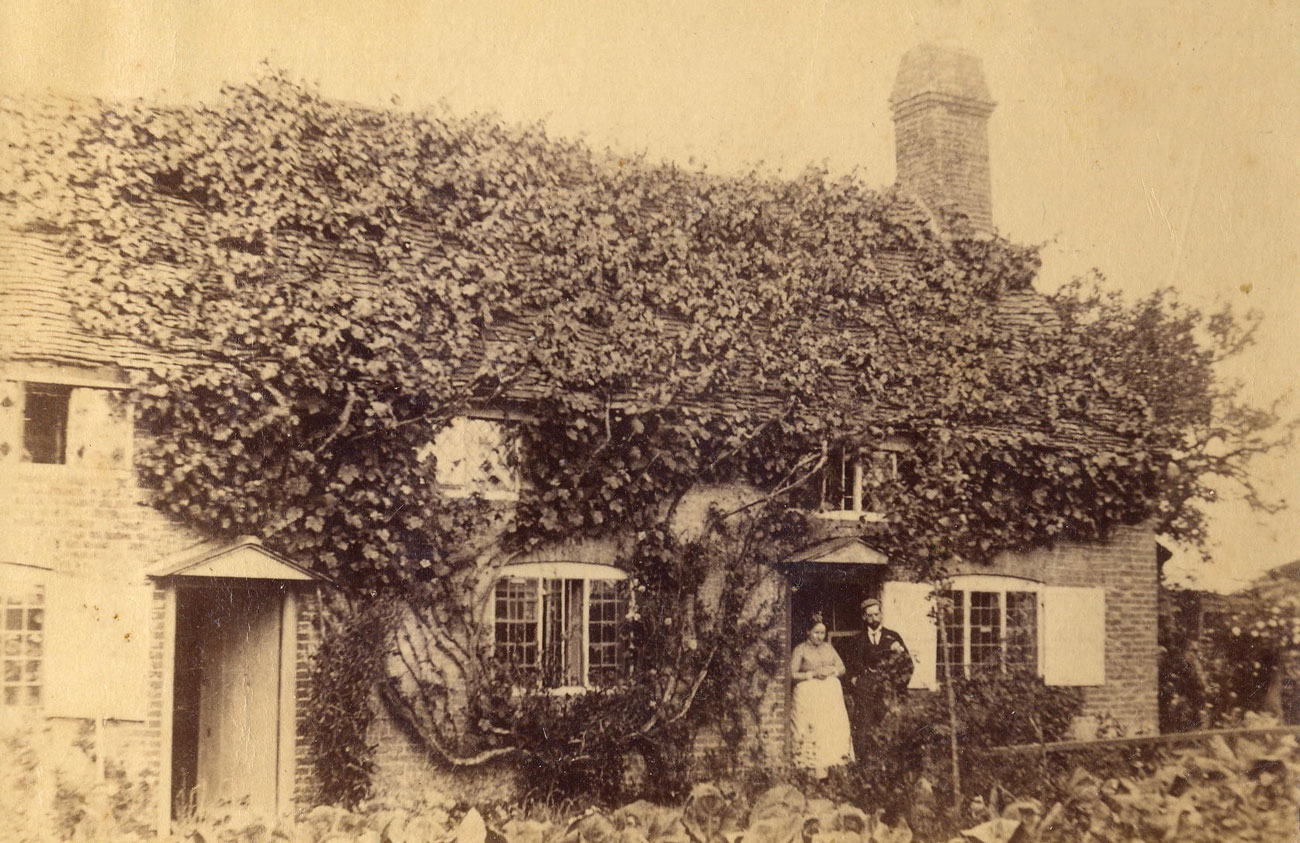
Vine Cottage, before 1885
A newly-married couple came to Cranleigh from Wisborough Green in 1851. Jesse and Sabina Mann moved into Vine Cottage, a dairy farm that stood near the south-west side of the Common, off what was then Elmbridge (or even Eldenbridge) Lane.
Fourteen years later the railway was built right next to the farm, cutting it off from most of Cranleigh. With only eight trains passing every day, perhaps it did not disturb them overmuch. Jesse worked as a sawyer, operating the steam saw at Holden’s timber works (where M&S now is). Much of the care of the farm, therefore, fell to Sabina, in addition to bringing up eleven children.
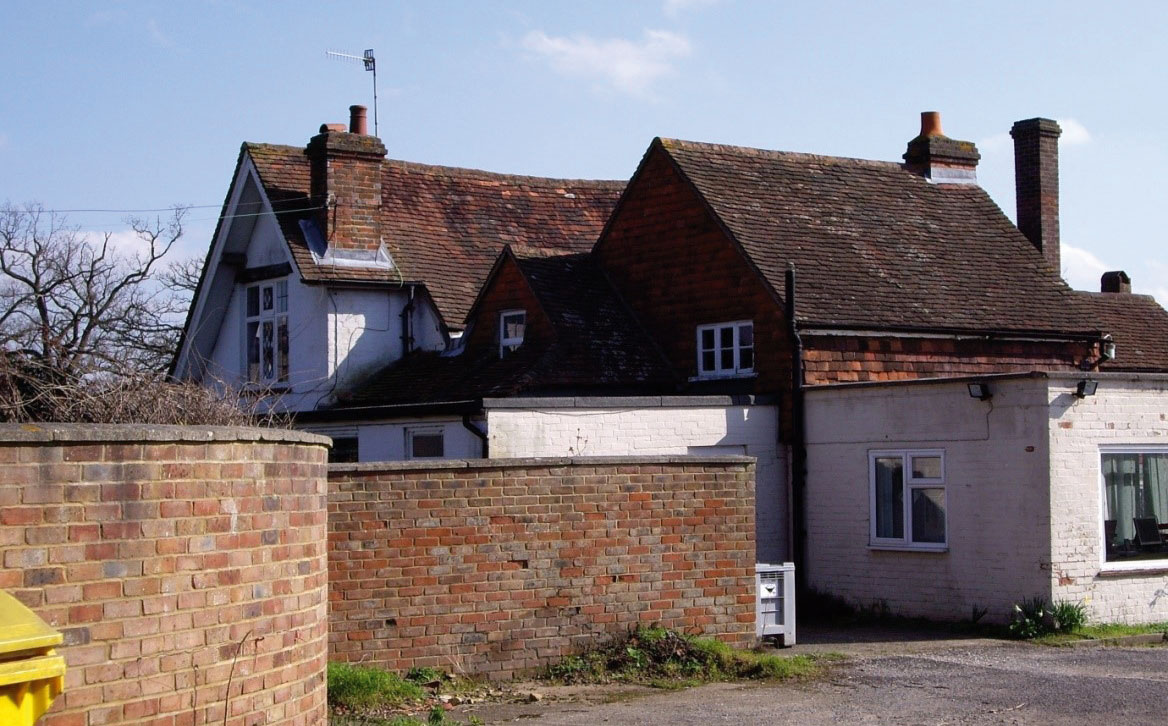
Vine Cottage as State Digital Security in 2007
When Jesse died in 1885, their son Isaac took over his father’s heavy work with the livestock, and took the cart on the milk delivery rounds. Sabina lived here for more than 50 years. (incidentally, her name was abbreviated to ‘Bee’, so we know the middle syllable was pronounced ‘ee’.) State Digital Security now occupies the house, and the farm fields have disappeared under housing and the industrial estate.
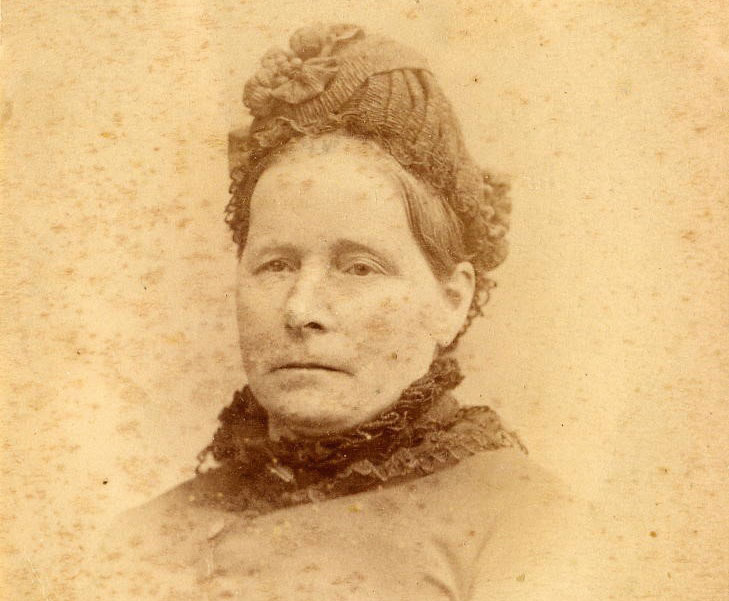
Sabina Mann, 1828-1914
By a happy chance, a granddaughter of Jesse and Sabina wrote her memories of visiting Vine Cottage around 1900, when she was six. The little girl was Win Delves, whose father ran two shops in Bank Buildings, a stationer’s and a barber’s (nos. 5 and 6). The family lived above the stationer’s shop, which was about half a mile from the farm. Win was the fourth of six daughters.
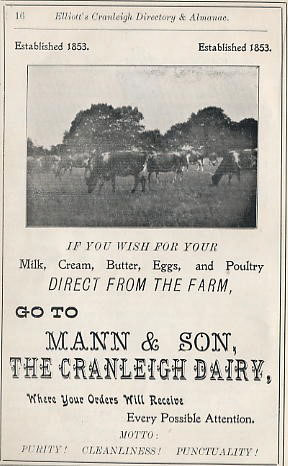
Advert in the Cranleigh Directory, 1910
Win describes how, after she returned home from school, if her mother needed skimmed milk, she and a sister would take the milk can from its peg in the pantry. They would walk along the road and through the fields, until they came to the kissing gate by the railway line.
‘Through this barrier we must go, and after looking carefully to right and left, and listening, to make quite sure no train was coming, we crossed the line, and now we were in sight of the dear old farm cottage. A smell of apples mingled with milk greeted us on the threshold.

Vine Cottages, built on the farm’s fields, photographed in 2016
‘We handed our milk can to Aunt Mary who took it into the dairy and gave us good measure for our pennies. The dairy was enchanted ground to us! Why was it always so cold? Even on a midsummer day it was cool, and the sight of the large pans of cream never failed to excite us. Sometimes Aunt Mary was making butter, and we were allowed to watch. How quick she was, slapping the butter, first on one side and then on the other, with the butter pats, rolling it into little balls and shell shapes, ready for the table! When Flower Show time came round, she would enter a slab of butter, but this time it would have the imprint of a cow on it. How wonderful it all was to our childish eyes, and how clever our aunt was!
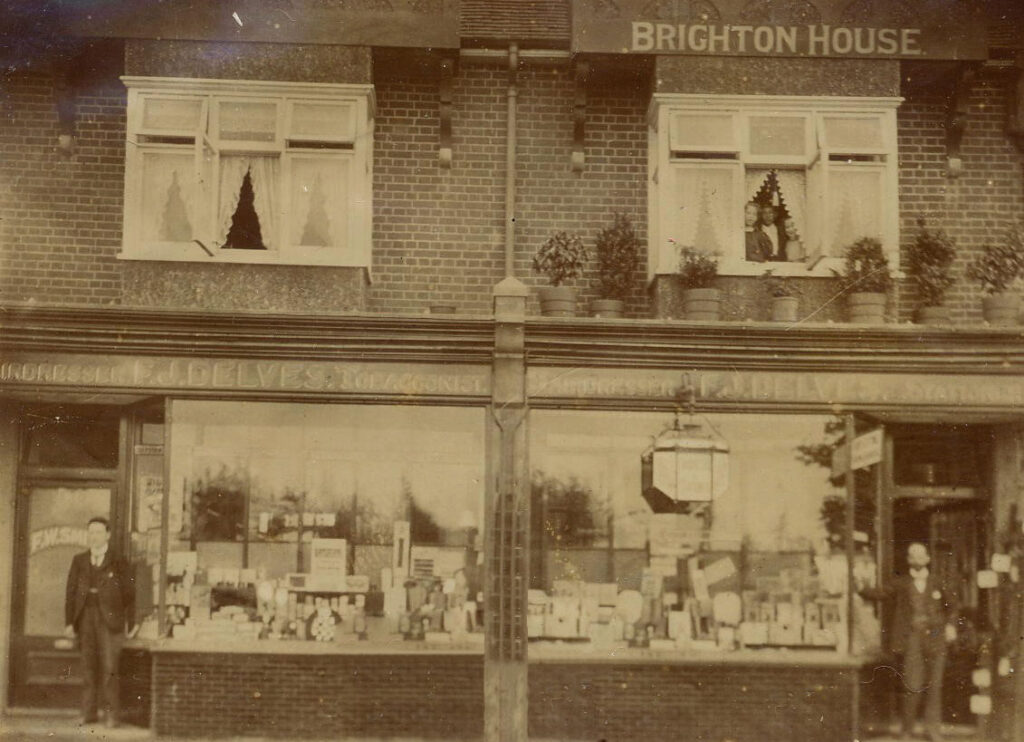
Fred Delves’s shops, 5-6 Bank Buildings
‘In the late afternoon Uncle Isaac and another man would appear in the big kitchen, and there would be a great clanking of milk churns and a strong smell of milk, mingling with the odour of leather gaiters, and the smell of horses too, along with the jingling of money. Uncle Isaac and the other man went through the accounts, relating to Aunt Mary the details of their milk round for the day. Sometimes the proceedings were interrupted by a knock on the door and a small voice was heard asking for a penn’th of skimmed milk, and if the child proffered a silver coin, this necessitated Aunt Mary going to get change, and she always knew where to find it.
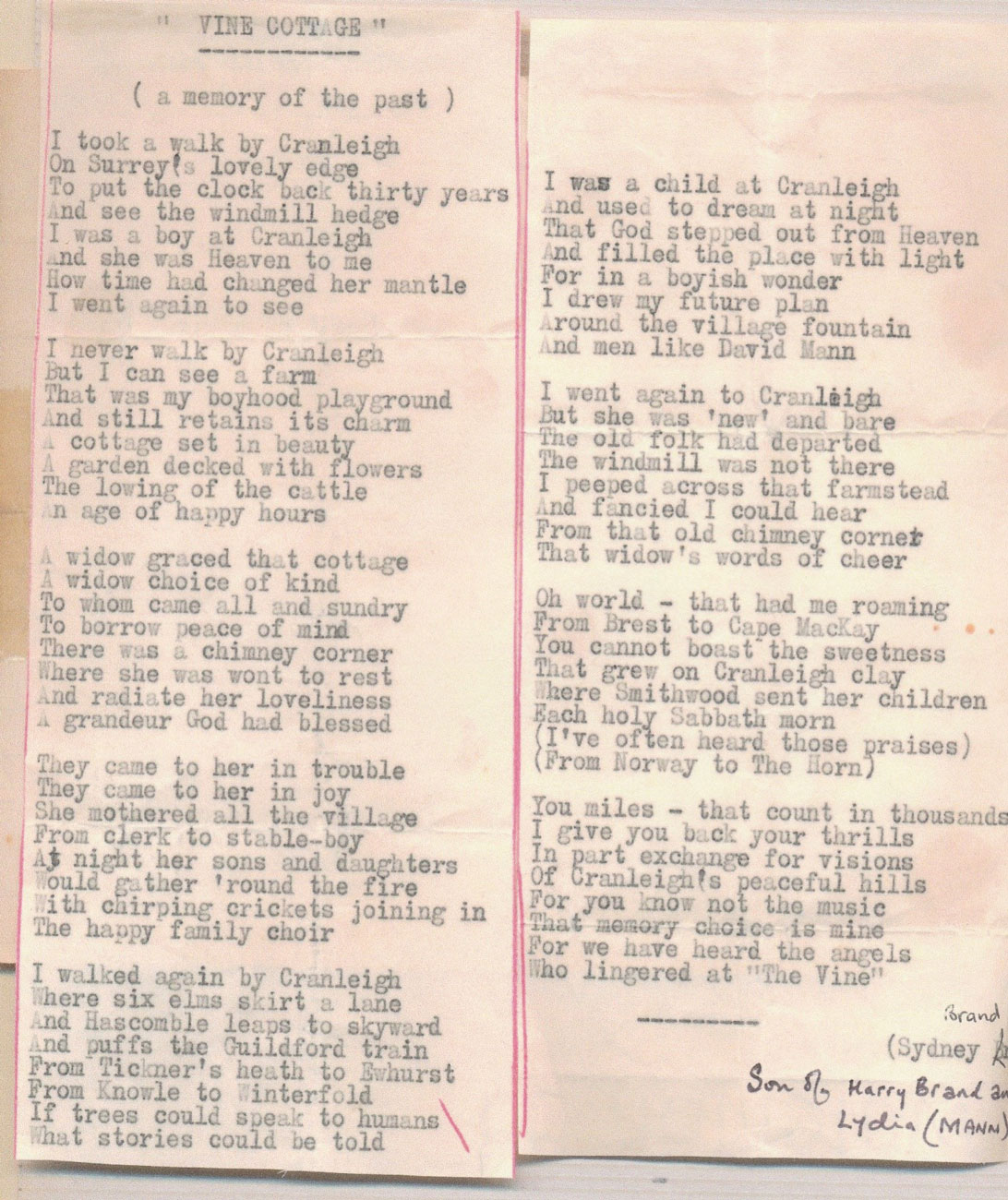
The above poem was written by another grandchild of Jesse and Sabina Mann, Sydney Brand (born 1892), evidently in the 1920s
‘There was a certain blue bowl with a blue stripe round it, which was kept on the mantelshelf, and a supply of coppers was available at all times. I never knew a time when the blue bowl did not contain a handful of coppers, and the sound of them being stirred up to find a half-penny or a farthing, has lived with me over the years.
‘What we liked most of all, was to stay to tea at Grandma’s, for then we could feed the chickens. We were allowed to bury our hands in the corn bin, and bring out a monster handful, which we scattered to the hungry chickens, and we watched them scramble and scratch and fight, each one trying to get the biggest share. After this we were allowed to peep in the nest-box for eggs, then carry them carefully to the basket, counting them eagerly the while, sometimes picking up a china one by mistake, and being very mystified. Did it really help the chickens to lay? It did not make sense to us to put a sham one in the nest. Auntie found it difficult to satisfy us on this point.’
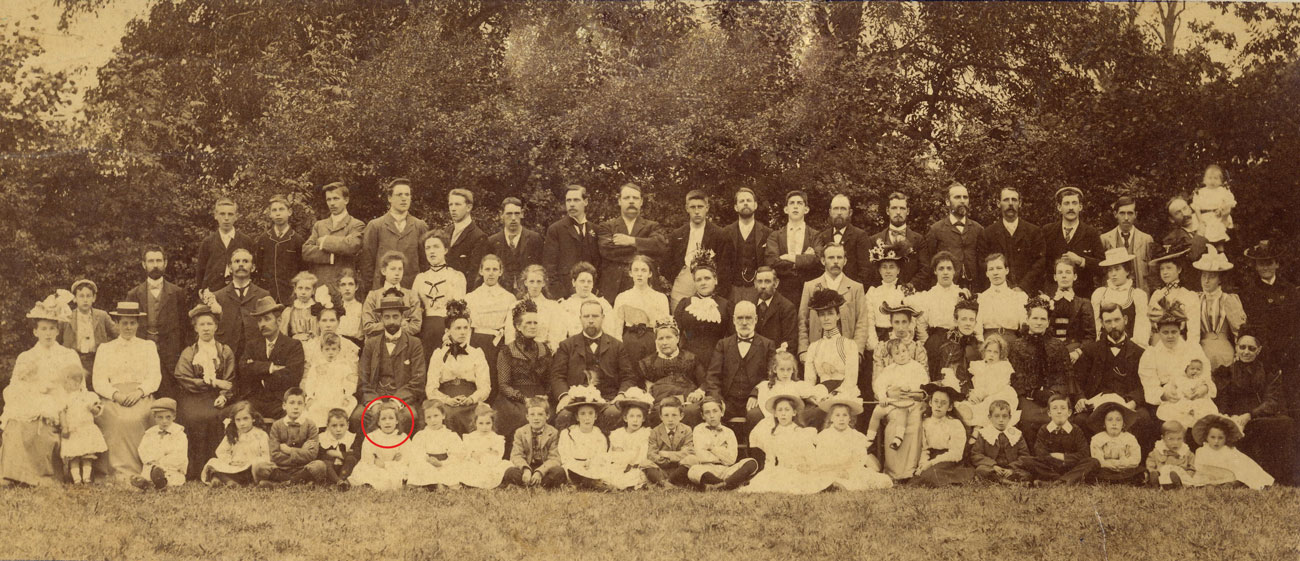
The Jesse and Sabina Mann dynasty in 1901, with Win Delves circled. If you look closely or know Sydney Brand, he is one of the children in the the front row. Can you spot him? Read his beautiful poem in our Poets Corner.
(Grateful thanks to Brian Cheesman for permission to use this account and the poem.)
The Cranleigh History Society is provisionally planning to resume its monthly meetings in January 2021.












Love this, sounds a lovely place to live. I’ve been doing my ancestry for some time, Sabina Mann is my 3rd Great GrandAunt, great to hear about their lives.